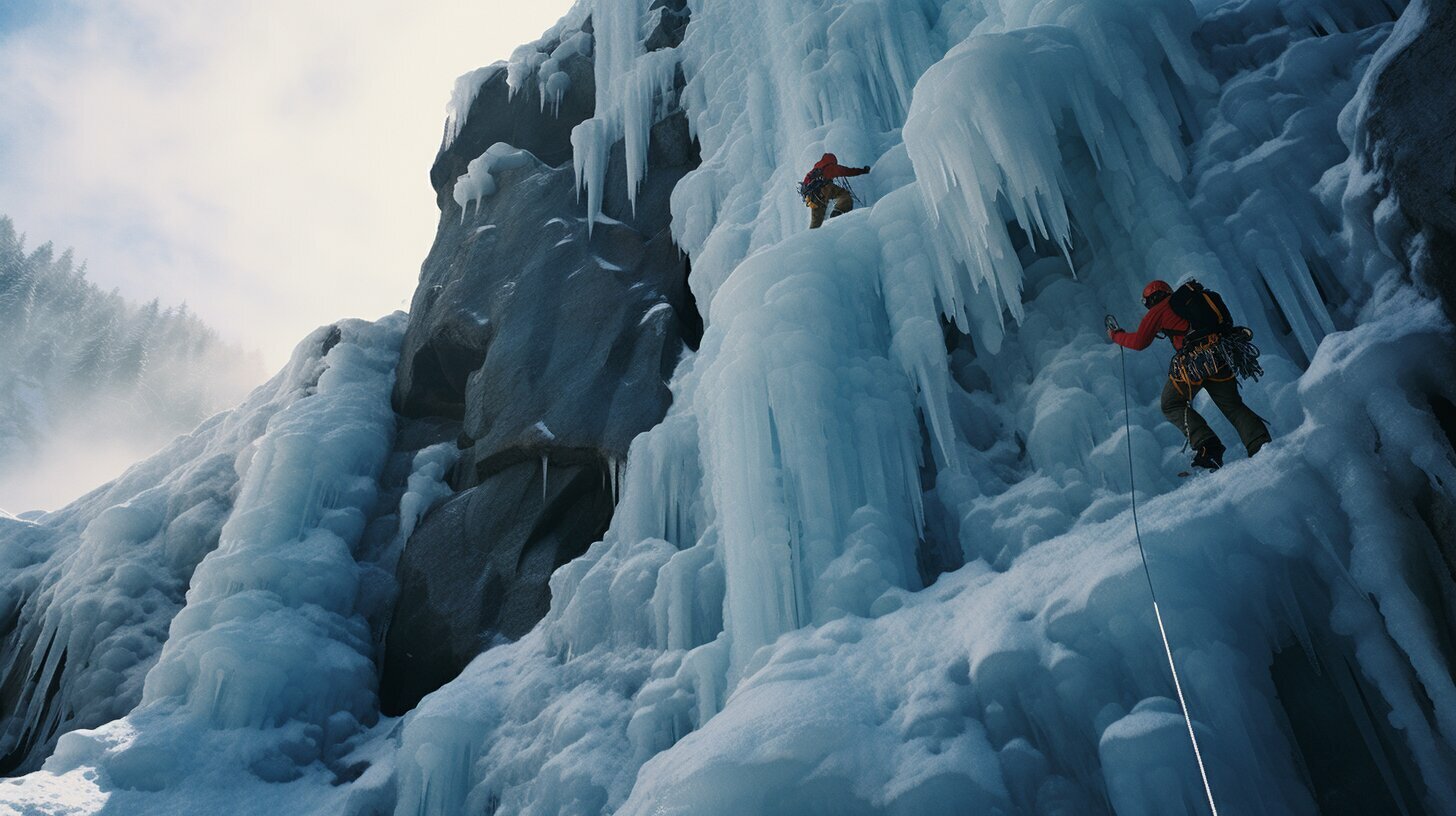If you’re gearing up for a high altitude hike, you’re in for an adventure of a lifetime. The views from breathtaking heights are absolutely stunning, but the challenges that come with hiking at high altitudes can be daunting.
To help you handle the heights with ease, we’ve put together a comprehensive set of high altitude hiking tips that will guide you through the do’s and don’ts of hiking at high elevations. With these tips, you can enjoy your hike to the fullest while keeping yourself safe and healthy.
Disclosure: When you buy through links on our site, we may earn an affiliate commission.
Key Takeaways
- High altitude hiking presents unique challenges that require proper preparation and caution.
- Acclimating to high altitudes is essential to prevent altitude sickness.
- Proper nutrition and hydration are crucial to fuel your body during high altitude hikes.
- Breathing exercises and gradual acclimation can help optimize oxygen intake and improve endurance at high altitudes.
- Gear essentials, safety precautions, and training techniques are crucial to a successful high altitude hike.
Preventing Altitude Sickness: Acclimation Techniques
Altitude sickness can be a common challenge when hiking at high altitudes. It occurs when your body doesn’t get enough oxygen due to the decreased air pressure and lower oxygen levels at higher elevations. However, there are ways to prevent altitude sickness and acclimate your body to the changes in oxygen levels.
Acclimation Hikes
One of the most effective ways to prevent altitude sickness is to gradually acclimate your body to higher elevations. This can be done through acclimation hikes, which involve hiking at lower altitudes and gradually increasing your elevation over several days. This allows your body to adjust to the differences in oxygen levels and reduce the risk of altitude sickness.
Hydration and Nutrition
Staying hydrated and properly nourished is also crucial in preventing altitude sickness. Make sure to drink plenty of water and consume foods high in carbohydrates and potassium, such as bananas and potatoes, to maintain your energy levels.
Medication
Some hikers may also consider taking medication, such as acetazolamide, to prevent altitude sickness. However, it’s important to consult with a doctor before taking any medication, as it may have side effects or interact with other medications you are taking.
Breathing Techniques
Finally, proper breathing techniques can also help prevent altitude sickness by maximizing your oxygen intake. Use diaphragmatic breathing, a technique that involves breathing deeply through your nose and exhaling slowly through your mouth. This can help increase the amount of oxygen your body receives and reduce the risk of altitude sickness.
By following these acclimation techniques, you can prevent altitude sickness and enjoy a safe and comfortable high altitude hiking experience.
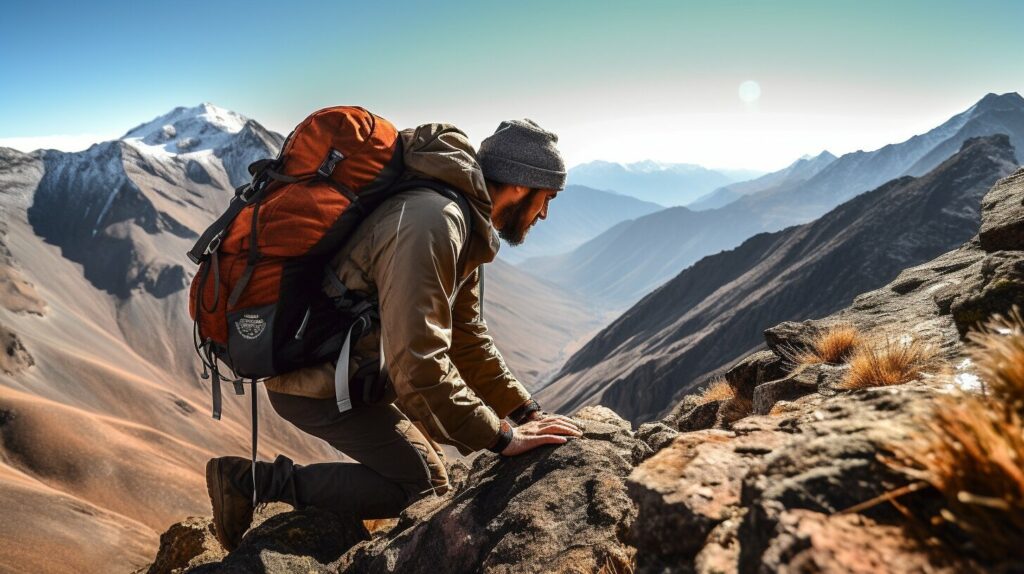
High Altitude Nutrition
When hiking at high altitudes, your body needs proper nutrition to keep up with the increased physical demands. Eating the right foods and staying hydrated can help maintain your energy levels and prevent altitude sickness. Follow these high altitude nutrition tips to fuel your body for a successful hike:
1. Eat High Energy Foods
Choose foods that are high in energy and easy to digest, like nuts, dried fruit, energy bars, and trail mix. These foods will give you the calories and nutrients your body needs to keep going, without weighing you down.
2. Hydrate Frequently
Dehydration is a common problem at high altitudes, so it’s important to drink water regularly. Aim to drink at least 3-4 liters of water per day, and also consider drinks that contain electrolytes, like sports drinks or coconut water. These can help your body maintain its fluid balance and prevent fatigue.
3. Choose Complex Carbohydrates
Complex carbohydrates are an important source of energy for high altitude hiking, as they provide longer-lasting energy than simple sugars. Good sources of complex carbs include whole grains, pasta, fruits, and vegetables. These foods also provide important vitamins and minerals that are necessary for good health and energy production.
4. Pack High Altitude Supplements
In addition to eating well, consider packing high altitude supplements like iron, magnesium, and Vitamin C, which can help your body adapt to the lower oxygen levels and prevent altitude sickness.
5. Avoid Alcohol and Caffeine
Alcohol and caffeine can both dehydrate your body, which is especially dangerous at high altitudes. Avoid these substances before and during your hike to keep your body properly hydrated.
By following these high altitude nutrition tips, you can fuel your body for a successful high altitude hike. Remember to pack plenty of energy-boosting foods, drink water frequently, and avoid substances that can dehydrate your body. With the right nutrition, you’ll be able to tackle any trail that comes your way.

Mastering High Altitude Breathing
Breathing can become more difficult at high altitudes due to the lower oxygen levels. To optimize your oxygen intake and improve your endurance during high altitude hikes, try these effective breathing exercises:
- Deep Breathing: Inhale slowly through your nose and fill your lungs with air, then exhale slowly through your mouth. Repeat for several minutes to relax and calm your body.
- Equal Breathing: Breathe in and out through your nose, keeping the length of your inhales and exhales equal. This can help you regulate your breathing and improve your focus.
- Pursed-Lip Breathing: Breathe in through your nose, then exhale slowly through pursed lips, as if you were whistling. This technique can help you control your breathing and reduce shortness of breath.
- Alternate Nostril Breathing: Close your right nostril with your thumb and inhale through your left nostril, then close your left nostril with your ring finger and exhale through your right nostril. Reverse the process by inhaling through your right nostril and exhaling through your left nostril. This technique can help improve your lung capacity and reduce stress.
Practice these breathing exercises before your high altitude hike and during breaks to help you enhance your breathing and increase your endurance.

These breathing exercises can help you optimize your oxygen intake and improve your endurance during high altitude hikes.
Staying Hydrated: Importance and Tips
Proper hydration is crucial when hiking at high altitudes, as the dry air can lead to dehydration and make altitude sickness more likely. It’s recommended to drink two to three liters of water each day, even if you don’t feel thirsty.
Dehydration can cause symptoms like headaches, dizziness, and fatigue, making your high altitude hike more challenging. To avoid this, bring a water bottle or hydration system with you and take frequent sips throughout the day.
On high altitude hikes, make sure to drink water before, during, and after each meal to stay hydrated. It’s also a good idea to avoid alcohol and caffeine as they can dehydrate you further. Instead, opt for herbal tea or a sports drink to replenish your electrolytes.

Remember to listen to your body and recognize the signs of dehydration, such as dark urine or a dry mouth. If you start feeling thirsty, drink water immediately, and take a break if necessary.
By staying properly hydrated, you’ll not only avoid the unpleasant symptoms of dehydration, but you’ll also have more energy and endurance to tackle the beautiful high altitude trails.
Gear Essentials: Must-Haves for High Altitude Hikes
Having the right gear is essential for a successful high altitude hike. To tackle the challenges of hiking at high altitudes, you’ll need to be prepared for all weather conditions and terrain types. Here are the must-have items for your high altitude hike:
| Item | Description |
|---|---|
| Hiking boots | Durable, waterproof, and comfortable boots with ankle support. |
| Layered clothing | Moisture-wicking base layers, insulating mid-layers, and a waterproof outer layer. |
| Sun protection | Sunscreen, sunglasses, and a hat to protect your skin and eyes from UV rays. |
| Trekking poles | Helpful for balance and reducing impact on your knees. |
| Waterproof backpack | Large enough to fit all your essential items and keep them dry. |
| Portable water filter | To obtain clean drinking water from natural sources. |
| Headlamp | For navigating in low light conditions or during nighttime hikes. |
| First aid kit | Essential for treating minor injuries and illnesses on the trail. |
In addition to these items, be sure to pack any medication or personal items you may need during your hike. Remember that you’ll be carrying your gear, so pack light and efficiently.
Tip: When selecting your gear, check for the weight and durability of the items. Consider renting or borrowing gear to save money and reduce unnecessary weight.
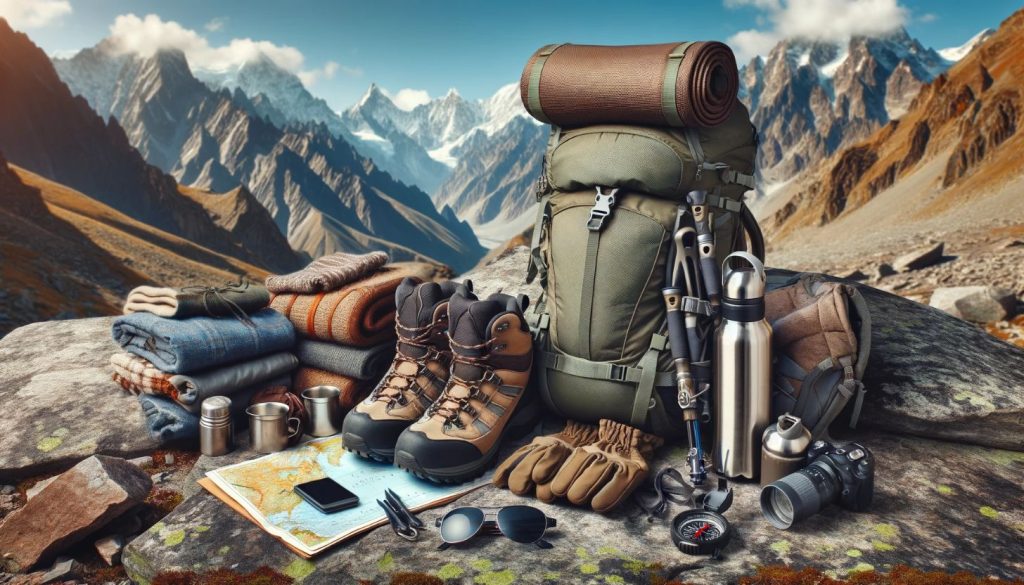
Keep in mind that the right gear can make all the difference in a high altitude hike. With these must-have items, you’ll be better prepared to handle the challenges that come with trekking in the peaks.
Gradual Acclimation: Acclimation Hikes
Gradual acclimation is essential for a successful high altitude hike. Before hitting the trails, plan and execute acclimation hikes that will help your body adjust to higher altitudes and reduce the risk of altitude sickness.
Start by identifying local trails that are at a lower elevation than your target hike and gradually work your way up. For example, if you plan on hiking at an altitude of 14,000 feet, start with a hike at 8,000 feet, then 10,000 feet, and gradually increase until you reach your target altitude.
During acclimation hikes, pay close attention to your body and signs of altitude sickness, such as headaches, dizziness, and nausea. Rest frequently and drink plenty of fluids to stay hydrated. Keep in mind that acclimation is a gradual process, and rushing can lead to altitude sickness.
Don’t forget to use proper gear, including hiking poles for stability and breathable clothing to regulate your body temperature. And always let someone know where you’re going and your expected return time.
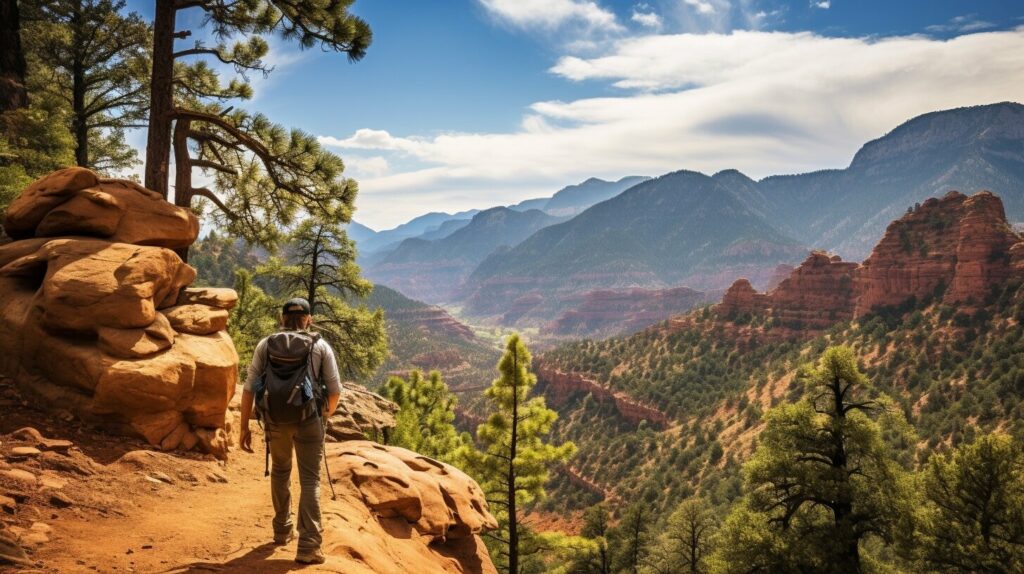
Acclimation hikes are crucial for your safety and enjoyment during high altitude hikes. Remember to plan ahead, take it slow, and listen to your body.
Physical Preparation: High Altitude Training
Preparing your body for high altitude hikes is essential for a successful and enjoyable experience. High altitude training can help you build the endurance and strength needed to tackle the challenges of hiking at high altitudes. Here are some techniques and exercises to include in your training regimen:
Aerobic conditioning: Aerobic exercise can improve your body’s ability to utilize oxygen, which is crucial at high altitudes. Activities such as running, cycling, and swimming can strengthen your cardiovascular system and improve your breathing efficiency.
Strength training: Building muscular strength can help you manage the demands of challenging terrain and carry a heavy backpack. Focus on exercises that target the legs, such as squats, lunges, and calf raises, as well as the core and upper body.
Hiking: Gradually increasing the elevation and distance of your hikes can help your body acclimate to higher altitudes. Start with shorter hikes at lower altitudes, and gradually increase the elevation and distance. This will help you adjust to the lower oxygen levels and improve your endurance.
| Training Technique/Exercise | Description |
|---|---|
| Interval training | Alternating high-intensity exercise with periods of rest can improve your overall fitness and prepare your body for the demands of high altitude hiking. |
| Stair climbing | Stair climbing can simulate the uphill terrain of high altitude hikes and improve leg strength and endurance. |
| Yoga and stretching | Yoga and stretching can improve flexibility and prevent injury during high altitude hikes. |
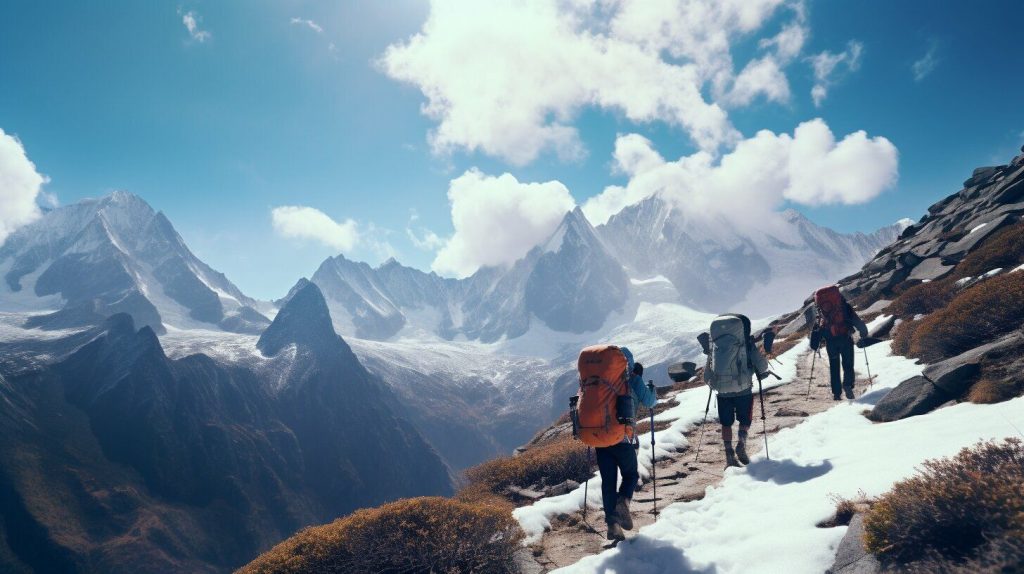
Remember to consult with a healthcare professional before starting any new exercise regime, especially if you have any underlying medical conditions. With the right training and preparation, you’ll be ready to tackle the heights with ease!
Safety First: Precautions at High Altitudes
When hiking at high altitudes, safety should be your top priority. Follow these essential safety precautions to ensure a successful and safe high altitude hike:
- Monitor the weather: Check the forecast and be prepared for sudden changes in weather conditions. Heavy rain, snow, and fog can make hiking more difficult and dangerous. If the weather looks unfavorable, consider postponing your hike.
- Navigation skills: Bring a map, compass, and GPS device to help you navigate the trails. Familiarize yourself with the route before you start hiking, and stay on marked trails to avoid getting lost.
- Emergency preparedness: Bring a first aid kit, whistle, and other emergency supplies in case of injury or unexpected situations. Let someone know your hiking plans and expected return time.
Remember, safety is a mindset, not just a set of rules. Always be aware of your surroundings and take responsible actions to ensure your safety and the safety of others.
By following these safety precautions, you can minimize the risks and have a safe and enjoyable high altitude hiking experience.
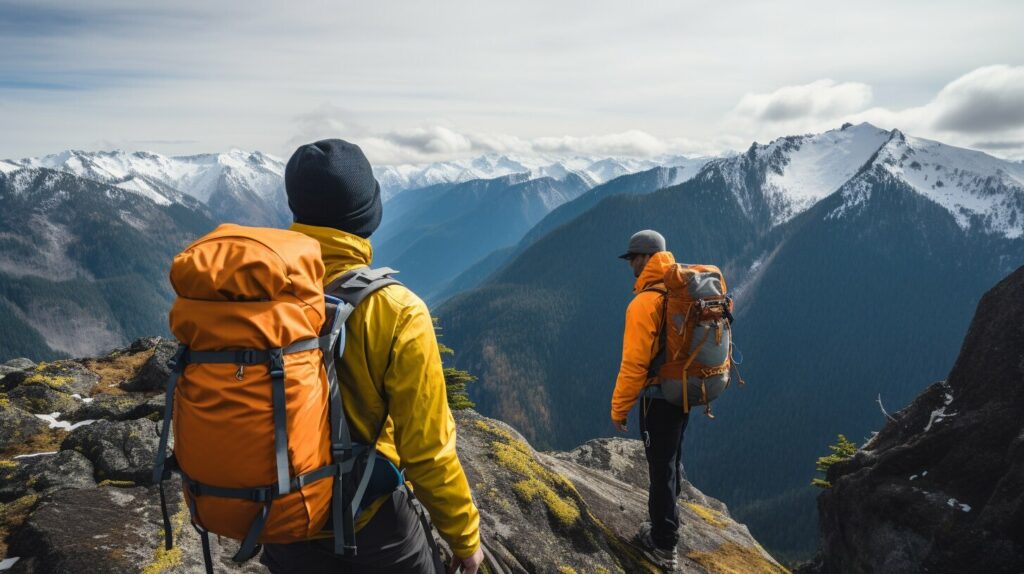
Enhancing Your High Altitude Hiking Adventure
Now that you’ve covered the top high altitude hiking tips, it’s time to focus on making your experience in the peaks unforgettable. Here are some additional tips to help you enjoy the highs:
- Take breaks to soak in the stunning views and appreciate nature’s beauty. Bring a camera and capture the moment.
- Challenge yourself by trying new routes or tackling more difficult terrain. The feeling of accomplishment is unlike anything else.
- Connect with other hikers on the trail. Share experiences and tips, and make new friends.
- Stay positive and keep a sense of humor. Hiking at high altitudes can be tough, but staying optimistic and finding the fun in the situation will make it much more enjoyable.
- Take care of your body and listen to its needs. If you feel tired, take a break. If you’re hungry, refuel. Your body will thank you for it.
Remember, high altitude hiking is not just about the destination, it’s about the journey. Enjoy every step of the way and make the most out of your experience!
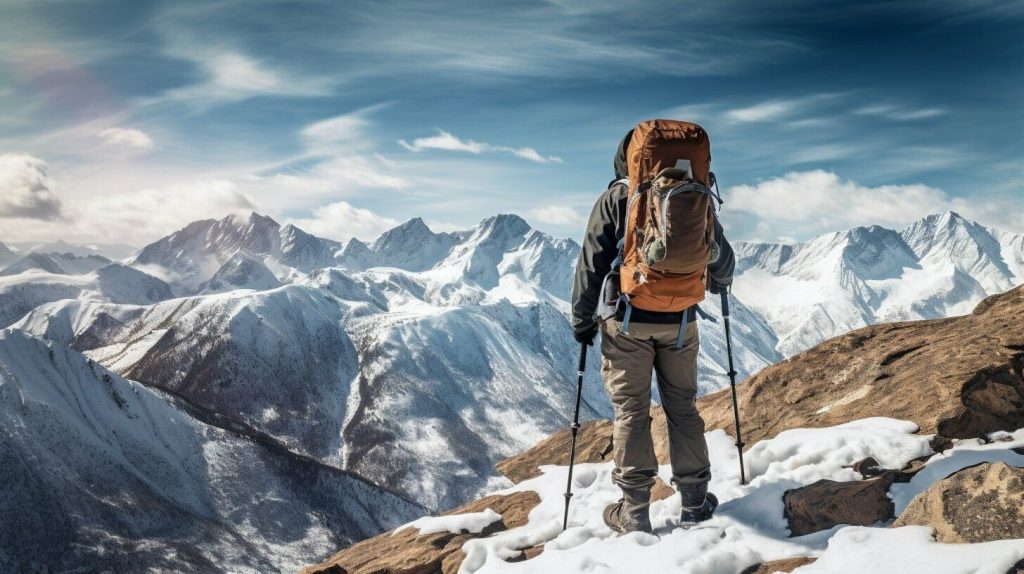
Conclusion
You now have the top high altitude hiking tips to handle the heights with ease. Remember to acclimate gradually, fuel your body with the right nutrition, stay hydrated, and prioritize safety for a successful and enjoyable high altitude hike.
Don’t forget to bring along the essential gear for your adventure in the peaks. And most importantly, take the time to enjoy the breathtaking views and capture memorable moments. With these tips, you’re well-equipped to conquer those peaks.
FAQ
What is altitude sickness?
Altitude sickness, also known as acute mountain sickness (AMS), is a condition that occurs when your body does not adjust well to higher altitudes. Symptoms may include headache, nausea, dizziness, and fatigue.
How can I prevent altitude sickness?
To prevent altitude sickness, it is important to acclimate gradually to higher altitudes. This can be done by ascending slowly, allowing time for your body to adjust. It is also recommended to stay hydrated, avoid alcohol and excessive physical activity, and consider taking medication such as acetazolamide under medical guidance.
What are some acclimation techniques for high altitude hiking?
Acclimation techniques for high altitude hiking include ascending gradually, taking rest days during your hike, and spending time acclimatizing at intermediate altitudes. It is also helpful to engage in breathing exercises, maintain proper hydration, and consume a diet rich in carbohydrates.
What kind of nutrition should I focus on for high altitude hiking?
When hiking at high altitudes, it is important to focus on a nutrition plan that includes high-carbohydrate foods to fuel your body. Consuming foods rich in iron and vitamin C can also help with oxygen transport. Additionally, staying hydrated and eating small, frequent meals can contribute to maintaining energy levels.
Are there any breathing exercises that can help at high altitudes?
Yes! Breathing exercises such as deep belly breathing and pursed lip breathing can help optimize oxygen intake and improve your breathing efficiency at high altitudes. These exercises can help increase your endurance and reduce the feeling of breathlessness during high altitude hikes.
How can I stay properly hydrated during high altitude hikes?
Staying properly hydrated is crucial during high altitude hikes. Make sure to drink plenty of water throughout the day, even if you don’t feel thirsty. It is also beneficial to avoid caffeine and alcohol, as they can contribute to dehydration. Consider using electrolyte supplements or drinking sports drinks to replenish lost minerals.
What gear should I have for high altitude hikes?
Essential gear for high altitude hikes includes sturdy hiking boots, layered clothing for changing weather conditions, a waterproof jacket, a backpack with proper support, a hat and sunglasses for sun protection, and trekking poles for stability. It is also important to carry a map, compass, and first aid kit.
How can I plan acclimation hikes to adjust to higher altitudes?
Planning acclimation hikes involves gradually increasing your altitude over multiple days. Start with hikes at lower altitudes and progressively move higher, allowing your body to adjust to the changes in oxygen levels. Take rest days in between to aid in acclimation.
Are there any specific training exercises for high altitude hikes?
Engaging in cardiovascular exercises such as running, cycling, or stair climbing can help improve your endurance for high altitude hikes. Additionally, strength training exercises targeting your leg muscles can enhance your ability to tackle steep ascents and descents.
What safety precautions should I take when hiking at high altitudes?
When hiking at high altitudes, it is important to monitor the weather forecast, carry a map and compass, and have basic navigation skills. Always let someone know your hiking plans and expected return time. Familiarize yourself with emergency protocols and carry essential safety equipment such as a whistle, headlamp, and extra food and water.
Any additional tips for a memorable high altitude hiking experience?
Absolutely! Take the time to enjoy the breathtaking views and capture memorable moments through photography. Pace yourself during the hike, listening to your body’s signals. Engage with fellow hikers and learn about the local culture and environment. Lastly, embrace the adventure and make memories that will last a lifetime!




